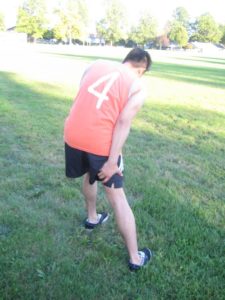A femur stress fracture occurs if the femur bone is subjected to prolonged overuse. It is important to note that the femur is the lengthy thigh bone in the leg. Just like with any bone in the body, the femur is also at risk for breakage due to abrupt force especially in high-velocity vehicular accidents or in contact sports.
What are the indications of a femur stress fracture?
If an individual is suspected with a femur stress fracture, the usual indications that are likely to manifest include the following:
- Dull, deep aching sensation in the thigh area
- There is likelihood of pain if a bending force is applied on the femur which is called the hang test or if the individual allows the thigh to dangle over the edge of a chair especially if weight is placed downwards onto the thigh.
- In some cases, the pain might be referred into the knee.
Dull, deep aching sensation in the thigh area. - An X-ray may or might not reveal any damage to the bone but an MRI can provide an accurate diagnosis.
Management
Once a fracture is confirmed, the individual should take a break or rest from any weight bearing activities. Fitness can be maintained by engaging in alternative activities such as cycling or swimming. It is also vital to pinpoint any biomechanical issues such as overpronation which might be a contributing factor to the injury.
Depending on the severity of the damage, it usually takes 7 weeks from the time the hang test is no longer painful before the individual can gradually return to activity or sports.
More Information / Disclaimer
The information posted on this page on a femur stress fracture is for learning purposes only. Learn to recognize and manage fractures including on the femur by taking a standard first aid course with Toronto First Aid.

